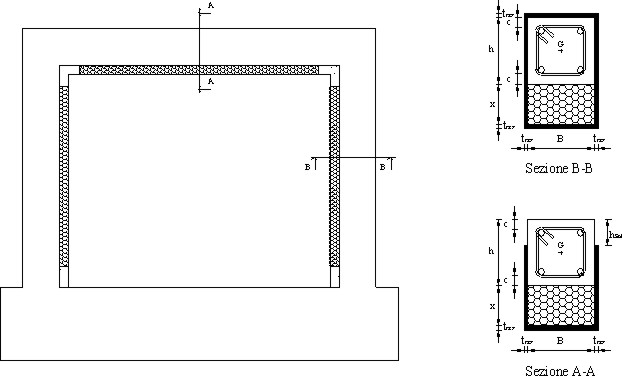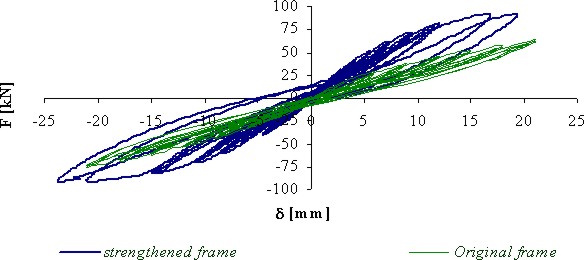
engineering & technology publications
ISSN 1759-3433
PROCEEDINGS OF THE TENTH INTERNATIONAL CONFERENCE ON CIVIL, STRUCTURAL AND ENVIRONMENTAL ENGINEERING COMPUTING
Increasing the Performance of a Reinforced Concrete Frame Strengthened using an Innovative Procedure
Department of Civil and Environmental Engineering, Faculty of Engineering, University of Catania, Italy
The frame structure now strengthened by the proposed methodology, will provide both ductility, capable of resisting the horizontal loads, and a greater resistance to the vertical loads, by avoiding any dangerous increment of the gravitational weight of the traditional strengthening techniques which consists of inserting either of concrete or steel plates. The analytical investigation of the strengthened frame is based on a finite element analysis carried out by a specific numerical code (ANSYS) while the transverse section verification is based on the ultimate limit state theory, according to european and international codes. Some new limit fields were defined for the transverse section of the structural element in order to consider the CFRP contribution.
The experimental test is carried out on a reinforced concrete frame at a 1:2 scale. The frame has a constant vertical load applied on each column and also a variable and a cyclic horizontal load. The behaviour in terms of load displacements, of both the investigated systems is reported in Figure 249.2. The hysteretical loops of the reinforced frame, derived from the tests, seems to be sensible. Besides polyurethane is an extremely deformable material, and does not suffer from either plastic deformation or fragile breaks. So it appears to be a very suitable material for the prefixed scopes to enhance the bearing capacity of the structural members of a frame while avoiding dangerous increment in the structural mass.
- 1
- Anania L., Badalá A., Failla G. (2003). "Increasing of the Flexural Performance of r.c. Beams Strengthened with C-FRP Materials", Construction And Building Materials.19 (2005) 55-61. doi:10.1016/j.conbuildmat.2004.04.011
purchase the full-text of this paper (price £20)
go to the previous paper
go to the next paper
return to the table of contents
return to the book description
purchase this book (price £135 +P&P)

